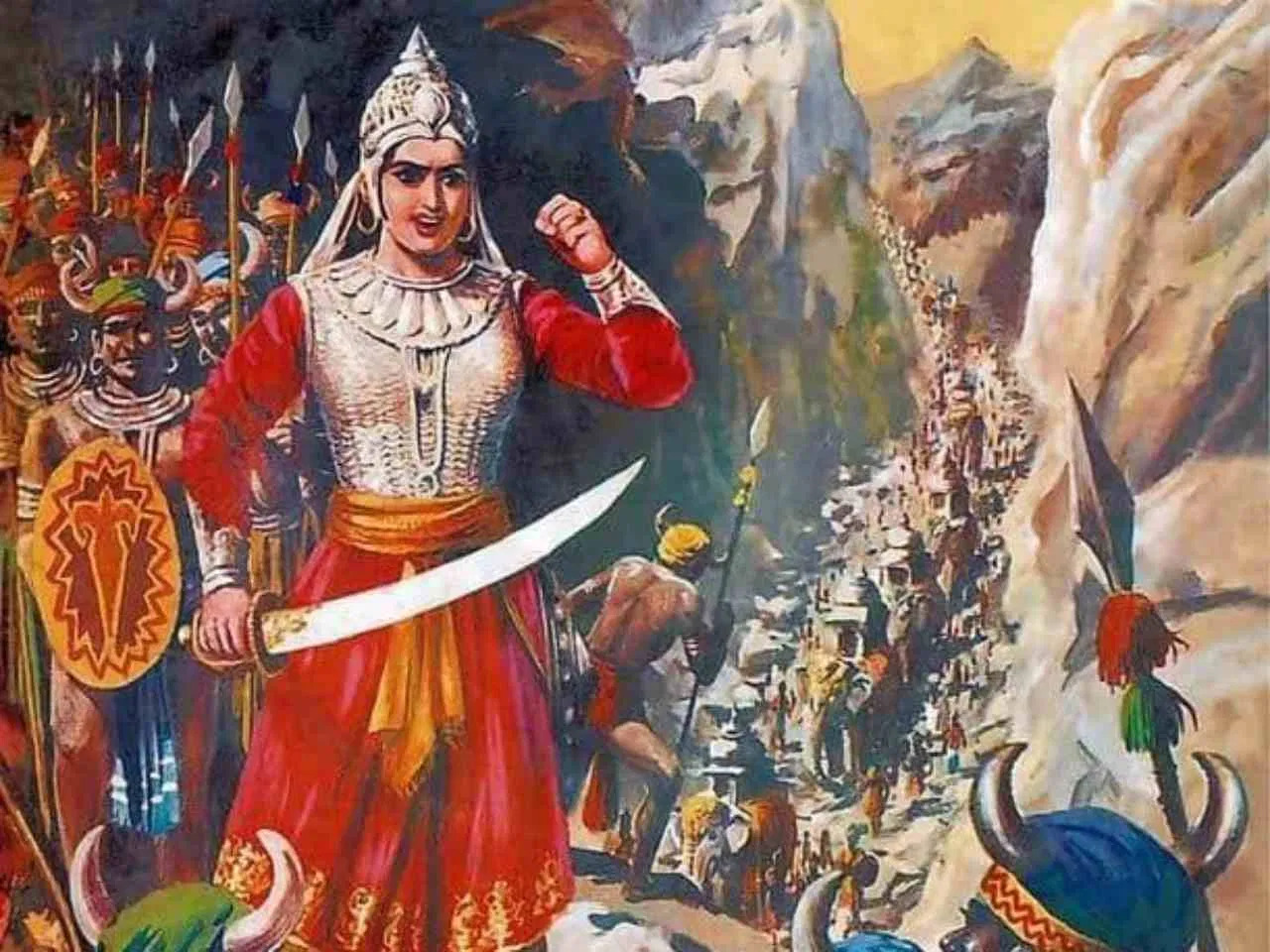Rani Durgavati
Context :
To kick off the six-day “Veerangana Rani Durgavati Gaurav Yatra,” an endeavour of the State government to honour the heritage of the 16th-century Gondwana kingdom queen Rani Durgavati, Union Home Minister Amit Shah will travel to Balaghat in Madhya Pradesh on Thursday.
Who was Rani Durgavati?
- Birth And Heritage:
-
-
- Rani Durgavati was born to the renowned Chandel emperor Keerat Rai on October 5, 1524, during the Chandel dynasty.
- The Chandel dynasty was well known for its brave king Vidyadhar, who thwarted Mahmud of Ghazni’s invasions.
- The famed Khajuraho temples and the Kalanjar fort are examples of the dynasty’s love of sculpting.
-
- Marriage and Alliance
-
-
- In 1542, Rani Durgavati wed Dalpatshah, the Gond dynasty’s eldest son and the son of King Sangramshah.
- The Chandel and Gond dynasties became more closely knit as a result of the union.
- The Gonds and Dalpatshah supported Rani Durgavati’s father Keerat Rai during Sher Shah Suri’s invasion, which resulted in Sher Shah’s demise.
-
- Leadership and Widowhood:
-
-
- In the year 1545, Rani Durgavati gave birth to a son by the name of Vir Narayan.
- Around 1550, Rani Durgavati assumed leadership of the Gond kingdom following the passing of her husband Dalpatshah.
-
- Adhar Kayastha and Man Thakur, two ministers, assisted her in running the government.
-
-
- The kingdom’s capital was transferred from Singaurgarh to Chauragarh, an essential fort in the Satpura hill range.
-
- Defeating Bajbahadur:
-
-
- In 1556, Sujat Khan’s son Bajbahadur took control of the Malwa province.
- The stormy romance between Bajbahadur and Rani Roopmati gained notoriety.
- Rani Durgavati’s reputation was improved when Bajbahadur tried to attack her but was soundly defeated.
-
- Interactions with the Mughals:
-
-
- In 1562, Akbar annexed the Malwa province to the Mughal Empire.
- The Mughal dynasty and Rani Durgavati’s realm had direct interaction.
- Ramchandra, the monarch of Rewa, was vanquished by Abdul Majid Khan, a Mughal subedar who was drawn to Rani Durgavati’s state by her wealth.
- Abdul Mazid Khan invaded Rani Durgavati’s realm with Akbar’s approval and was motivated by imperialism and expansionism.
-
- Battle and Defence:
-
-
- Rani Durgavati decided to defend her realm and set up camp in Narrai, a valley bounded by the Gaur and Narmada rivers on either side of a mountainous ridge.
- She led a valiant defence despite having outnumbered and inadequately equipped forces.
- After her Fauzdar Arjun Das was murdered, Rani Durgavati took charge of the defence alone.
- Her forces triumphed after effectively repelling the Mughal army and pursuing them.
-
- Final Battle and Sacrifice:

-
-
- The Mughals reassembled, and Asaf Khan ordered heavy artillery the following morning.
- Rani Durgavati persisted in the battle while mounted on her elephant Sarman.
- Her son Vir Narayan put up a heroic fight that repeatedly forced the Mughal army to turn back.
- Sadly, Vir Narayan was hurt in the conflict.
- Even though she was hit by arrows, Rani Durgavati remained conscious.
- She refused to leave the battlefield despite knowing that she would soon be defeated and killed herself with a dagger.
- As “Balidan Diwas” (Martyrdom Day), June 24, 1564, is remembered as the day she was crucified.
-
- Legacy and Honours:
-
-
- Rani Durgavati was renowned for her administrative prowess, beauty, bravery, and fearlessness.
- Rani Durgavati and her son Veer Narayan are well known for their connections to the Madan Mahal Fort in Jabalpur.
- In her honour, the University of Jabalpur was renamed Rani Durgavati Vishwavidyalaya by the Madhya Pradesh government in 1983.
- On June 24, 1988, the Indian government released a postage stamp in memory of her.
- The Durgavati Express (11449/11450) runs between Jabalpur Junction and Jammutawi and is named for the Queen.
- The third Inshore Patrol Vessel (IPV) of its kind, ICGS Rani Durgavati, was commissioned by the Indian Coast Guard on July 14, 2018.
- On June 24, 1988, the Indian government honoured her by releasing a postal stamp in remembrance of her martyrdom.
-
Why was the queen in the news recently?
- The ‘Veerangana Rani Durgavati Gaurav Yatra,’ a six-day programme organised by the State government, would be launched in Balaghat, Madhya Pradesh, during Amit Shah’s visit there.
- The yatra aims to honour the legacy of Queen Durgavati, a prominent figure from the 16th-century Gondwana kingdom.
- The yatra has five routes that leave from various points in Madhya Pradesh. The Vindhya and Mahakoshal regions, where Queen Durgavati is greatly honoured, are two areas where tribes predominate.
- 21% of the people of Madhya Pradesh are tribal. The yatra seeks to establish relationships with and win the support of the tribal groups.
- Madhya Pradesh has 230 Assembly seats, 47 of which are set aside for tribal groups.





